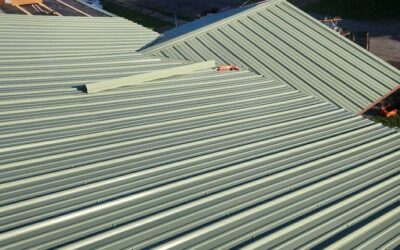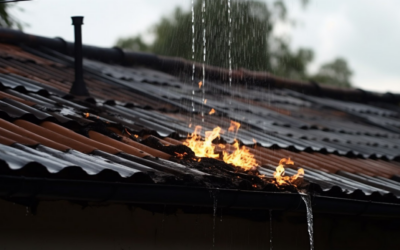How To Install A Roof Step By Step: The Ultimate DIY & Professional Guide
A solid, properly installed roof is one of the most important investments you can make for your home. Whether you’re a DIY enthusiast or planning to hire professional roofers, understanding how to install a roof step by step helps you grasp the complexity of the project, avoid costly mistakes, and ensure a durable, weatherproof result.
In this in-depth guide, we’ll walk you through every stage of roof installation — from preparation and tear-off to finishing touches. If you live in Northeast Ohio, especially around Jefferson and Ashtabula County, you’ll also learn why working with trusted professionals like S&K Construction And Remodeling LLC can make your roofing project hassle-free and guaranteed.
Why Knowing the Step-By-Step Roof Installation Process Matters
Installing a roof might seem straightforward—just put shingles on a roof deck, right? Not exactly. Roofing involves numerous critical steps that must be performed in the right order, using the right materials and tools. A poorly installed roof can lead to leaks, structural damage, energy inefficiency, and costly repairs.
This guide is designed to give you clear, actionable information whether you plan to install a roof yourself or understand what your contractor is doing.
Step 1: Safety First — Prepare Your Worksite
Roof installation is inherently risky, so safety preparation is your number one priority.
- Wear proper personal protective equipment (PPE): hard hats, gloves, non-slip boots, and eye protection.
- Set up sturdy ladders or scaffolding with stable footing.
- Use fall protection gear such as harnesses and guardrails.
- Clear the work area of debris, furniture, and valuables.
- Protect landscaping and property with tarps or plywood sheets to catch debris.
Professional roofing contractors like S&K Construction And Remodeling LLC always prioritize safety, ensuring the job site is secure for workers and homeowners.
Step 2: Remove the Old Roof (Tear-Off)
If you’re replacing an existing roof, the first physical step is to remove old roofing materials, including:
- Shingles or tiles
- Underlayment
- Flashing
- Nails and staples
Tools Needed:
- Roofing shovel or pry bar
- Roofing nail puller
- Dumpster or disposal bins for debris
A complete tear-off exposes the roof deck, allowing inspection for damage and providing a clean slate for the new roof. While some homeowners may choose to install new shingles over old ones (roof overlay), this is generally discouraged due to added weight and hidden damage risks.
Step 3: Inspect and Repair the Roof Deck
Once the old roofing materials are removed, thoroughly inspect the roof decking (plywood or OSB boards). Look for:
- Rotting or soft spots
- Cracks or splits
- Mold or mildew
- Warped or buckled boards
Replace or reinforce damaged sections with new plywood. This step is critical — a compromised roof deck can lead to shingle failure and leaks.
Step 4: Install Ice and Water Shield
Especially important in colder climates like Northeast Ohio, an ice and water shield is a self-adhering waterproof membrane that goes along roof edges, valleys, and vulnerable areas to prevent water intrusion from ice dams and wind-driven rain.
- Apply it over the eaves, typically extending 2 feet inside the exterior wall line.
- Install it around chimneys, skylights, and other roof penetrations.
This layer acts as an extra barrier to protect the underlying wood from water damage.
Step 5: Install Roof Underlayment
Next, install a protective roof underlayment over the entire roof deck. This is a secondary waterproof barrier beneath shingles.
Types of Underlayment:
- Felt paper: Traditional, made from asphalt-saturated felt; economical but less durable.
- Synthetic underlayment: Lightweight, tear-resistant, and more weatherproof.
Roll out the underlayment horizontally, overlapping each course by several inches to ensure no gaps. Secure with roofing nails or staples.
Step 6: Install Drip Edge
Drip edges are metal flashing strips installed along the roof perimeter:
- Along eaves, the drip edge goes under the underlayment.
- Along rake edges (the roof sides), it goes over the underlayment.
Drip edges prevent water from seeping under the roofing materials and protect the roof deck edges from weather damage.
Step 7: Install Flashing Around Penetrations
Flashing is metal or rubberized material installed around areas where the roof is penetrated, such as:
- Chimneys
- Skylights
- Vent pipes
- Roof valleys
Proper flashing installation directs water away from these vulnerable spots, preventing leaks.
Step 8: Install Starter Shingles
Apply starter shingles along the roof eaves and rakes before the main shingles. Starter strips:
- Provide a secure foundation for the first row of shingles
- Help seal the edges to prevent wind uplift and water intrusion
Starter shingles are usually cut from regular shingles or come as pre-cut strips.
Step 9: Install the Main Shingles
Now, you’re ready to install your roofing shingles — whether asphalt, architectural, metal, or tile.
Asphalt Shingle Installation Tips:
- Start at the bottom edge, working left to right (or right to left) and move upward.
- Stagger each course to avoid aligning seams.
- Nail each shingle according to manufacturer instructions, usually four nails per shingle.
- Maintain consistent spacing and alignment for a clean look.
Metal roofing or tile installation requires specialized tools and techniques but follows a similar sequential process.
Step 10: Install Ridge Caps and Hip Caps
Install ridge caps along the roof’s ridges and hips after laying shingles on the main field. Ridge caps:
- Seal the peak of the roof against weather penetration
- Often include ventilation slots for attic airflow
- Provide a finished appearance
They are typically cut from shingles or purchased as pre-made ridge cap shingles.
Step 11: Install Roof Vents and Ventilation Components
Proper ventilation is crucial to prevent moisture buildup, reduce attic heat, and extend the life of your roof and HVAC systems.
Common roof ventilation includes:
- Ridge vents (along roof peaks)
- Soffit vents (under eaves)
- Gable vents (on side walls)
- Powered attic fans or turbines (optional)
Your roofing plan should include ventilation solutions tailored to your home and local climate.
Step 12: Install Gutters and Downspouts (Optional but Recommended)
While gutters aren’t part of the roof structure itself, they are essential for diverting rainwater away from your home’s foundation and landscaping.
Many roofing contractors offer:
- Seamless gutters custom fit to your roofline
- Gutter guards to reduce debris buildup
- Downspout extensions for proper drainage
Step 13: Final Cleanup and Inspection
After installation is complete, the work area must be cleaned thoroughly:
- Remove nails, debris, and leftover materials
- Clean gutters and downspouts
- Inspect for any loose shingles, flashing issues, or debris trapped in valleys
A professional roofing contractor like S&K Construction And Remodeling LLC takes pride in meticulous cleanup and final inspections to guarantee a job well done.
Step 14: Post-Installation Walkthrough & Warranty Information
Finally, walk through the roof with your contractor. This is your opportunity to:
- Understand roof maintenance tips
- Clarify warranty terms for materials and workmanship
- Get contact information for future concerns
Tips for Successful Roof Installation
- Check local building codes and obtain necessary permits before starting.
- Plan around weather: avoid rainy or windy days to protect materials and ensure worker safety.
- Use quality materials matched to your climate and roof design.
- Hire experienced professionals when in doubt, especially for complex roofing systems.
- Keep detailed records of inspections, materials, and warranties.
Why Hire S&K Construction And Remodeling LLC for Your Roof Installation?
If you live in Jefferson, Ashtabula County, or Northeast Ohio, S&K Construction And Remodeling LLC offers expert roofing installation with:
- Owens Corning Preferred Contractor status
- Years of experience and trusted local reputation
- Transparent pricing and financing options
- Comprehensive roofing services, including repairs, inspections, and replacements
Their team follows all safety protocols, uses premium materials, and ensures your new roof stands the test of time.
Frequently Asked Questions (FAQs)
Q: Can I install a roof myself?
A: While DIY installation is possible for experienced homeowners, roofing requires skill, tools, and safety precautions. Hiring a professional reduces risks and ensures warranty compliance.
Q: How long does roof installation take?
A: Most residential roofs take 1-3 days, depending on size, weather, and complexity.
Q: Do I need a permit for roofing?
A: Yes, most municipalities require permits for roof replacement. Contractors usually handle this.
Q: What’s the best roofing material?
A: It depends on your budget, climate, and aesthetic preferences. Asphalt shingles are popular for affordability and durability; metal roofs last longer but cost more.
Conclusion
Installing a roof involves many detailed steps, each essential to protecting your home and investment. From tear-off and deck repair to underlayment, flashing, shingle installation, and ventilation — following the proper sequence ensures a long-lasting, watertight roof.
If you’re in Northeast Ohio, including Jefferson and Ashtabula County, trust S&K Construction And Remodeling LLC for professional roof installation services. Their expertise, high-quality materials, and customer-focused approach make them the ideal choice for your next roofing project.
Ready to start your roof installation? Contact S&K Construction today for a free estimate and expert advice.
If you’d like, I can also provide you with formatting for blog headings, meta descriptions, or local SEO tweaks. Just say the word!
 (440) 307-2060
(440) 307-2060


